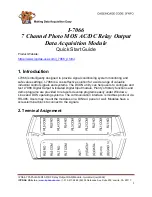
Fig.55a-Abb.55a
I
ATTENZIONE
Posizionare i piattelli correttamente al fine di prevenire la caduta
dell’auto (Fig. 55a)
Regolare l’altezza dei piattelli in modo tale che prendano i 4 punti di sol-
levamento contemporaneamente. Ruotare l’interruttore generale in po-
sizione 1 e ruotare il pulsante di salita fino al raggiungimento di una al-
tezza di circa 10 cm.
Controllare ancora una volta che i piattelli siano correttamente posizio-
nati sotto la macchina ed assicurarsi che i bloccabracci siano corretta-
mente inseriti spingendo i bracci avanti ed indietro .
Ruotare l’interruttore generale (QS) in posizione 1 e premere il pulsante
di salita fino al raggiungimento dell’altezza desiderata.Tenere sotto con-
trollo sia il sollevatore che il veicolo durante il sollevamento. Durante la
corsa i martelletti si inseriscono automaticamente in ogni riscontro del
carrello.Per limiti e sicurezze di sollevamento, vedere Pagg.15 e 16
“RISCHI IN FASE DI SOLLEVAMENTO DEL VEICOLO”.
STAZIONAMENTO
Raggiunta l’altezza desiderata e prima di acceder sotto il carico, preme-
re il pulsante di stazionamento (SB3). L’arresto del movimento avviene
automaticamente allorché i martelletti si inseriscono sotto il primo ri-
scontro che trovano sui carrelli in fase di discesa.
DISCESA
Prima di effettuare la discesa é necessario procedere allo sblocco dei
martelletti di sicurezza: occorre premere il pulsante di salita (SB1) per
far salire i carrelli di circa 2 cm. Premere il pulsante di discesa (SB2)
che sgancia automaticamente i martelletti ed aziona l’elettro-valvola di
discesa. La velocità di discesa è regolata da una “valvola regolatrice di
flusso” contenuta nella pompa. La discesa termina quando quando i ci-
lindri idraulici sono completamente scarichi. Quando i carrelli sono
completamente abbassati, il bloccaggio automatico dei bracci si apre e
ne permette la rotazione.
I
WARNING
Position the plates correctly so as to prevent the car from falling
(Fig. 55a).
Adjust the height of the plates so that they grip the 4 lifting points simul-
taneously. Turn the main switch round to position 1 and turn the lift but-
ton until a height of about 10 cm is reached.
Check once again that the plates are positioned correctly under the ve-
hicle and make certain that the arm locks are fitted properly, pushing
the arms forwards and backwards.
Turn the main switch (QS) to position 1 and press the up push
button until reaching the required height. Keep the lift and the vehicle
under control during lifting.
As the carriages are raised, the safety wedges are inserted
automatically into each iron pad under the carriage.
Regarding lift limits and safety devices, see pages 15, 16 “RISKS
WHILE VEHICLE IS BEING RAISED”.
PARKING
Once the required height has been reached, press the parking push
button (SB3). The movement is stopped automatically when the safety
wedge rests on the level of the first slot that they come in contact with
while the carriages are coming down.
LOWERING
Before lowering the carriages, the safety wedges must be
disconnected. Press the up push button (SB1) to lift the carriage about
2 cm. Press the down push button (SB2) that automatically
releases the safety wedges and activates the down electro-valve.
Lowering speed is regulated by the “flow regulating valve” in the pump.
Lowering stops when the hydraulic cylinders are completely unloaded.
When the carriages are totally lowered, the automatic arm locking device
opens and lets the carriages rotate.
64
Summary of Contents for 208I/7
Page 2: ......
Page 20: ...SCHEMI ELETTRICI TRIFASE WIRING DIAGRAMS SCHALTPLAN DREIPHASENSTROM Fig 9 Abb 9 18...
Page 83: ......
Page 84: ...COLONNE E TRAVE SUPERIORE POSTS AND UPPER BEAM...
Page 85: ...CARRELLI E BRACCI CARRIAGES AND ARMS...
Page 86: ...SICUREZZE SAFETY DEVICES...
Page 87: ...QUADRO DI COMANDO CONTROL BOX STEUERTAFEL TABLEAU DE COMMANDE PANEL DE MANDO...















































